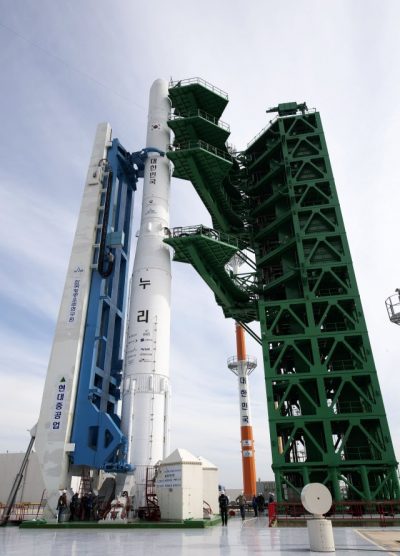South Korea Launches First Domestically Made Space Rocket
The Nuri rocket failed in delivering a dummy payload – a 1.5-ton block of stainless steel and aluminium – into orbit 600 to 800 kilometres above Earth.

All Global Research articles can be read in 51 languages by activating the “Translate Website” drop down menu on the top banner of our home page (Desktop version).
Visit and follow us on Instagram at @crg_globalresearch.
***
South Korea’s first domestically built space rocket has blasted off in a test launch that represents a major leap for the country’s ambitious space plans.
The three-stage KSLV-II Nuri rocket, emblazoned with the national flag, carried a dummy satellite on its launch from the Naro Space Center at 0800 GMT (5 PM local) on Thursday.
The Nuri, or “world”, rocket is designed to put 1.5-tonne payloads into orbit 600 km to 800 km (373 miles to 497 miles) above Earth, as part of a broader space effort that envisages the launch of satellites for surveillance, navigation, and communications, and even lunar probes.
But the rocket failed to put its dummy payload into orbit after its maiden launch on Thursday, President Moon Jae-in said.
The launch and all three stages of the Korea Space Launch Vehicle II worked, as did the payload separation, Moon said, but “putting a dummy satellite into orbit remains an unfinished mission”.
Overseen by the Korea Aerospace Research Institute (KARI), the 200-tonne rocket was moved to its launch pad on Wednesday and raised into position.
In non-Korean entertainment news, in less than 8 hours at Thursday 4pm, South Korea's first locally-developed space rocket, Nuri, will be launched into space carrying a satellite that weighs 1.5 tons. The Korea Aerospace Research Institute has been working on this for 11 years! pic.twitter.com/bbtz3Mg30X
— John Lee (@koreanforeigner) October 20, 2021
The rocket’s three stages are powered by liquid-fuel boosters built by an affiliate of South Korea’s Hanwha conglomerate, with a cluster of four 75-tonne boosters in the first stage, another 75-tonne booster in the second, and a single 7-tonne rocket engine in the final stage.
A sensitive issue
Space launches have long been a sensitive issue on the Korean peninsula, where North Korea faces sanctions over its nuclear-armed ballistic missile programme.
South Korea’s plans call for launching a range of military satellites in future, but officials deny that the NURI has any use as a weapon itself.
The country’s last such rocket, launched in 2013 after multiple delays and several failed tests, was jointly developed with Russia.
Having its own launch vehicle will give South Korea the flexibility to determine payload types and launch schedules, and benefits South Korean companies, officials said.
*
Note to readers: Please click the share buttons above or below. Follow us on Instagram, @crg_globalresearch. Forward this article to your email lists. Crosspost on your blog site, internet forums. etc.
Featured image is from John Lee/Twitter

